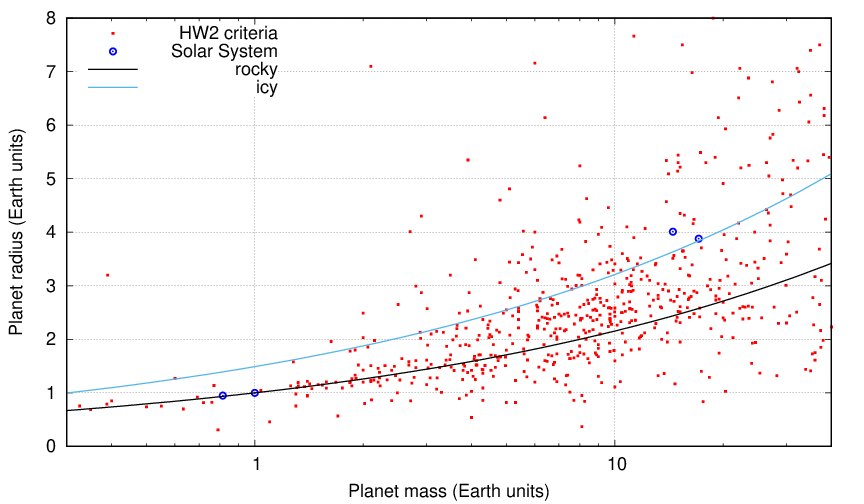- Make a graph showing radius (in Earth units) in linear units on the
y-axis, and mass (in Earth units) in logarithmic units on the x-axis.
Use limits of 0.3 to 40 Earth masses on the x-axis,
and 0 to 8 Earth radii on the y-axis.

- Place symbols on the graph for planets in our Solar System.
You should find that four of the planets will fall in
this range of mass and radius.
See graph. Planets Venus, Earth, Neptune, and Uranus fit on graph.
- Draw a line on the diagram showing the location of all planets
which have exactly the same density as the Earth.
We could call these "rocky planets."
See graph.
- Some scientists think that this diagram shows evidence for a
set of "icy planets", with density which is about 0.3
times that of the Earth. Do you see any evidence for
such planets? Please explain.
A line on the graph shows the location of any "icy" planets.
There does appear to be a clump of such objects
with masses 5-15 times that of the Earth,
but considerably smaller than Neptune and Uranus.
